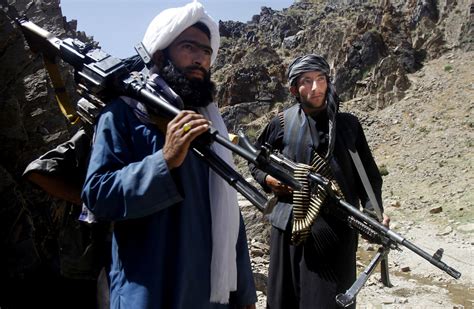United States government mistakenly transferred $239,000,000 to the Taliban.
The head of the U.S. government watchdog for the war in Afghanistan said Wednesday that the U.S. may have provided billions in taxpayer dollars to the Taliban and Afghan terror groups since the withdrawal of American troops, but even he doesn’t know the full extent of the problem.
“Unfortunately, as I sit here today, I cannot assure you we are not now funding the Taliban,” special inspector general for Afghan reconstruction, John Sopko, the Special Inspector General for Afghanistan Reconstruction said at a House Oversight Committee hearing. “Nor can I assure you the Taliban are not diverting it from the intended recipients, which are the Afghan people.”
The special inspector general for Afghan reconstruction, known as SIGAR, was formed in 2008 to monitor the billions of dollars the U.S. was spending in the war against the Taliban. As the Special Inspector General for Afghanistan Reconstruction, his agency investigates cash squandered by the Defense and State Departments and U.S. Agency for International Development due to corruption, fraudulent contracting and poor execution.
Investigators found that the State Department failed to comply with its own counterterrorism partner vetting requirements in Afghanistan, Judicial Watch reported. The funds came from State Department divisions called “Democracy, Human Rights, and Labor” and “International Narcotics and Law Enforcement Affairs.” The report identified more than two dozen instances where these divisions failed to keep proper vetting records.
BREAKING: The U.S. government has accidentally sent the Taliban at least $239 million since 2021 in development assistance because the State Department failed to properly vet award recipients, according to new report.
— Patrick Webb (@RealPatrickWebb) August 4, 2024
SIGAR (Special Inspector General for Afghanistan Reconstruction)
Since 2001, the Department of State (State) has used grants, contracts, and other funding vehicles to implement development and humanitarian projects to help achieve U.S. foreign policy and national security goals in Afghanistan. Under federal laws and regulations, U.S. agencies, including State, are prohibited from engaging in transactions with certain sanctioned individuals, entities, and jurisdictions, including those listed by the Department of the Treasury’s Office of Foreign Assets Control (OFAC).
State established internal guidance and policies to help ensure it complies with these prohibitions. State’s partner vetting process involves its bureaus using non-standardized methodologies to perform risk assessments and evaluate whether prospective implementing partners have ties to terrorists or terrorist-affiliated individuals and entities. For these risk assessments, State bureaus consider a variety of program and context- specific risk factors and employ both public and nonpublic information sources to help mitigate the risk that State funds inadvertently benefit designated terrorist organizations. If a bureau’s risk assessment determines that there is a risk that department funds or department-funded activities may benefit terrorists or their supporters, the bureau may elect to use additional risk mitigating measures, such as Risk Analysis Management counterterrorism namecheck vetting, which State refers to as “RAM vetting.”
Since 2001, the Department of State (State) has used grants, contracts, and other funding vehicles to implement development and humanitarian projects to help achieve U.S. foreign policy and national security goals in Afghanistan. Under federal laws and regulations, U.S. agencies, including State, are prohibited from engaging in transactions with certain sanctioned individuals, entities, and jurisdictions, including those listed by the Department of the Treasury’s Office of Foreign Assets Control (OFAC).
State established internal guidance and policies to help ensure it complies with these prohibitions. State’s partner vetting process involves its bureaus using non-standardized methodologies to perform risk assessments and evaluate whether prospective implementing partners have ties to terrorists or terrorist-affiliated individuals and entities.
For these risk assessments, State bureaus consider a variety of program and context- specific risk factors and employ both public and nonpublic information sources to help mitigate the risk that State funds inadvertently benefit designated terrorist organizations. If a bureau’s risk assessment determines that there is a risk that department funds or department-funded activities may benefit terrorists or their supporters, the bureau may elect to use additional risk mitigating measures, such as Risk Analysis Management counterterrorism namecheck vetting, which State refers to as “RAM vetting.”
